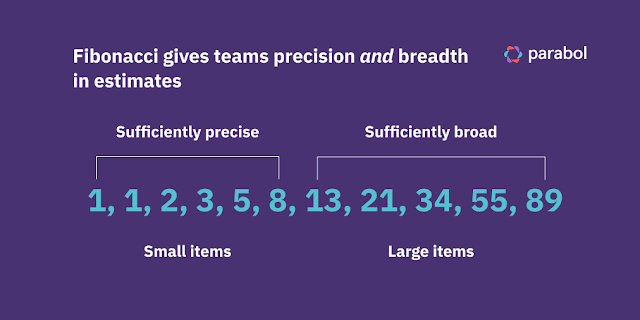Fibonacci Agile Estimation
Most agile teams opt to combine the Fibonacci sequence with an estimation method called planning poker.
In Planning Poker, each team member has a modified deck of cards that corresponds with the Fibonacci sequence. When a task is up for estimation, each member individually picks a card that best matches their estimate for that item. Everyone then reveals their cards simultaneously and discusses their estimates until they reach a consensus.
Why is the Fibonacci sequence used in agile estimation?
The point of Fibonacci is to force your hand when estimating larger, complex tasks instead of wasting time nitpicking over minor differences. This is best explained through an example that compares simple time-based estimation with Fibonacci estimation.
Let’s say you estimated your stories on a steady scale of 1-50. When you discuss your backlog item with the team, one picks 31, the other 36, and a third 38. When the gap between each estimate is a single integer it’s hard to estimate with conviction. It feels like estimates have to be very precise.
With Fibonacci numbers, this wouldn’t happen because the sequence forces you to choose between numbers with a wider distance between them. In this example, everyone would have likely picked number 34 in the Fibonacci sequence, as the alternatives would be 21 or 55.
Now, you might worry that this leads to less accurate estimates on larger tasks. You’d be right, but you needn’t worry because you can’t fit many large items into one sprint anyway. Usually, a high estimate means you need to break the task down into smaller ones.
Besides, the purpose of estimation in agile is not to create a precise work plan down to the hour. It’s for the team to have a reasonable grasp of how many product backlog items they should be aiming to complete in the upcoming sprint.
For smaller tasks, where the stakes are lower, the Fibonacci sequence offers nuance and definition. This makes sense because smaller tasks are generally more manageable and it’s easier to assign a more precise estimate to them.
https://www.parabol.co/blog/fibonacci-estimation/





No comments: